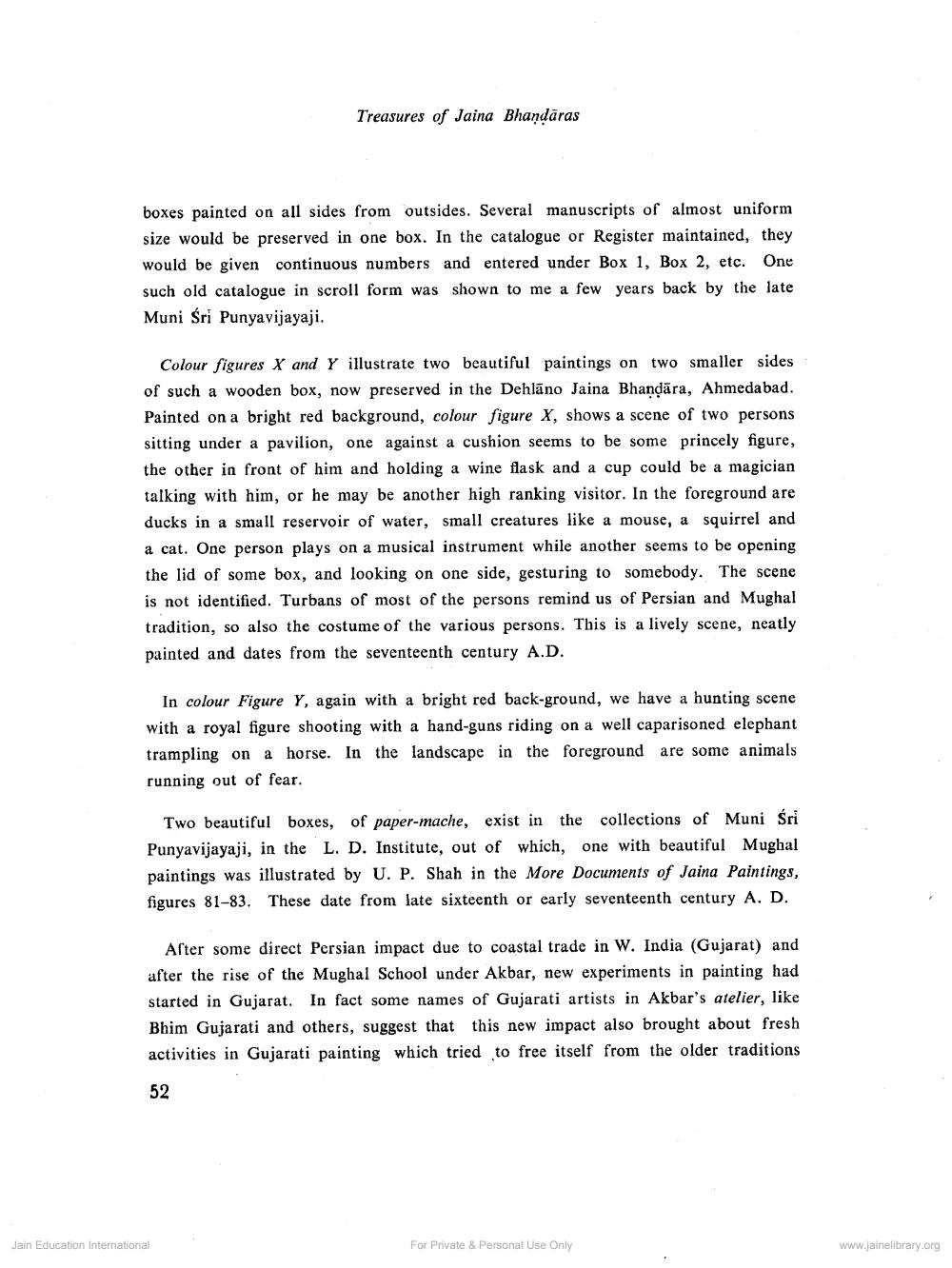________________
Treasures of Jaina Bhandaras
boxes painted on all sides from outsides. Several manuscripts of almost uniform size would be preserved in one box. In the catalogue or Register maintained, they would be given continuous numbers and entered under Box 1, Box 2, etc. One such old catalogue in scroll form was shown to me a few years back by the late Muni Sri Punyavijayaji.
Colour figures X and Y illustrate two beautiful paintings on two smaller sides of such a wooden box, now preserved in the Dehlāno Jaina Bhandāra, Ahmedabad. Painted on a bright red background, colour figure X, shows a scene of two persons sitting under a pavilion, one against a cushion seems to be some princely figure, the other in front of him and holding a wine flask and a cup could be a magician talking with him, or he may be another high ranking visitor. In the foreground are ducks in a small reservoir of water, small creatures like a mouse, a squirrel and a cat. One person plays on a musical instrument while another seems to be opening the lid of some box, and looking on one side, gesturing to somebody. The scene is not identified. Turbans of most of the persons remind us of Persian and Mughal tradition, so also the costume of the various persons. This is a lively scene, neatly painted and dates from the seventeenth century A.D.
In colour Figure Y, again with a bright red back-ground, we have a hunting scene with a royal figure shooting with a hand-guns riding on a well caparisoned elephant trampling on a horse. In the landscape in the foreground are some animals running out of fear.
Two beautiful boxes, of paper-mache, exist in the collections of Muni Sri Punyavijayaji, in the L. D. Institute, out of which, one with beautiful Mughal paintings was illustrated by U. P. Shah in the More Documents of Jaina Paintings, figures 81-83. These date from late sixteenth or early seventeenth century A. D.
After some direct Persian impact due to coastal trade in W. India (Gujarat) and after the rise of the Mughal School under Akbar, new experiments in painting had started in Gujarat. In fact some names of Gujarati artists in Akbar's atelier, like Bhim Gujarati and others, suggest that this new impact also brought about fresh activities in Gujarati painting which tried to free itself from the older traditions
52
Jain Education International
For Private & Personal Use Only
www.jainelibrary.org




